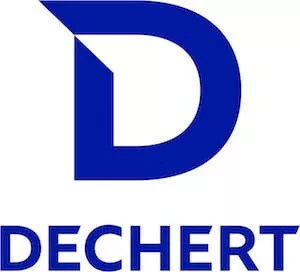- within Finance and Banking topic(s)
- in United States
- with readers working within the Retail & Leisure industries
- in United States
- with readers working within the Advertising & Public Relations industries
- within Antitrust/Competition Law, Consumer Protection and Tax topic(s)
Key Takeaways
- SEC clarifies stance on liquid staking: The Staff of the Division of Corporation Finance clarified in a recent Statement that certain liquid staking activities, like protocol staking, do not involve the offer or sale of securities under federal securities laws.
- About liquid staking: Liquid staking allows crypto asset holders to retain liquidity by depositing staked crypto assets in exchange for staking receipt tokens. These staking receipt tokens evidence ownership and can be used independently of the deposited crypto asset.
- Liquid staking providers under the Howey test: The Statement concludes that liquid staking providers perform administrative, rather than entrepreneurial or managerial, functions.
- Staking receipt tokens are not securities: The Statement concludes that staking receipt tokens are not "receipts" for securities because the underlying staked crypto assets are not securities and that they are not offered or sold as part of an investment contract because the efforts of the liquid staking providers are not providing entrepreneurial or management services.
- Scope: The Statement, by its terms, does not apply to liquid staking arrangements where (1) the liquid staking provider exercises discretion regarding whether, when or how much of the depositors' crypto assets are staked; (2) the liquid staking provider provides any guarantee or sets any rewards owed to crypto asset depositors; or (3) the staking receipt tokens provide returns in addition to evidencing depositors' ownership of the staked crypto assets.
The staff of the Securities and Exchange Commission's Division of Corporation Finance (the "Staff") recently issued a statement (the "Statement") regarding whether "liquid staking" implicates federal securities laws.1 The Statement builds upon the Staff's May 2025 statement on solo, self-custodial and custodial "protocol staking" activities which clarified that such staking activities did not involve the offer and sale of securities under the Securities Act or the Exchange Act (the "Staking Statement").2 The Statement takes the view that liquid staking activities also do not involve the offer and sale of a security under the Securities Act or the Exchange Act.
The Statement is largely a continuation of the analysis of the Staff's Staking Statement and relies on many of the same concepts. Read together, the statements on protocol staking and liquid staking create a clear regulatory path for a broad range of staking activities and the intermediaries that undertake them.
Background: Liquid Staking
"Protocol staking" refers to the staking of crypto assets that are intrinsically linked to the programmatic functioning of a public, permissionless blockchain network and are used to participate in the network's consensus mechanism or otherwise used to maintain the operation and security of the network.3 "Liquid staking" is a form of protocol staking in which owners of crypto assets deposit their assets with a third-party protocol staking service provider and in return receive newly "minted" crypto assets ("Staking Receipt Tokens") that evidence the depositors' ownership of the deposited crypto assets and any rewards4 from staking that accrue to these deposited crypto assets.
Staking Receipt Tokens are issued to the depositors on a one-for-one basis to the amount of the deposited crypto assets, and depositors can use these Staking Receipt Tokens as collateral or to participate in crypto applications, including those that can provide a return to the holder. Staking Receipt Tokens thus enable their holders to maintain liquidity without having to withdraw the deposited crypto assets from the staking protocol. Depositors can redeem the Staking Receipt Tokens for the deposited crypto assets and any rewards that have accrued to the deposited crypto assets while staked, subject to any applicable "unbonding"5 period.
Depositors can engage in liquid staking through two types of liquid staking providers — protocol-based liquid staking or third-party service providers.6
- Protocol-based liquid staking: In protocol-based liquid staking, a smart contract accepts the deposited crypto assets, holds the assets, stakes them programmatically and issues Staking Receipt Tokens. The issuance and redemption of Staking Receipt Tokens and any adjustments for rewards or "slashing"7 losses occur automatically through code.
- Service-provider model. Here, a custodian or other third-party entity accepts deposits of crypto assets, holds the assets in a wallet, stakes them (often through a node operator that the provider selects) and issues the Staking Receipt Tokens directly to the depositors. The minting, issuing and redeeming of the Staking Receipt Tokens is performed by the third-party service provider.
The Staff's Legal Analysis
As with their analysis of protocol staking activities in the Staking Statement, the Staff applied the Howey8 test to both models of liquid staking to determine whether a security exists. The Howey test states that an "investment contract" (and therefore a security) exists when there is:
- an investment of money,
- in a common enterprise,
- with an expectation of profit,
- derived from the efforts of others (where those efforts are "entrepreneurial" or "managerial," rather than merely "administrative" or "ministerial").
According to the Staff, under the Howey test, the following liquid staking activities (the "Liquid Staking Activities") do not constitute entrepreneurial or managerial efforts, and so the provision of these services in connection with the issuance of a Staking Receipt Token does not involve the offer or sale of a security under the Securitieas Act or the Exchange Act:
- the activities undertaken by liquid staking providers, including in connection with the earning and distribution of staking rewards, slashing and the minting, issuing and redeeming of Staking Receipt Tokens, including holding deposited crypto assets (in a wallet or smart contract) for depositors, issuing Staking Receipt Tokens evidencing the deposited crypto assets and facilitating the staking of deposited crypto assets for depositors; and
- certain types of "ancillary services" that are
offered by service providers in connection with protocol staking.
These include:
- Slashing coverage: where a service provider reimburses or indemnifies users if their validator is penalized for network violations;
- Early unbonding: where a service provider allows users to withdraw staked assets before the end of a protocol's lock-up period;
- Modified reward payment timing: where the service provider delivers earned rewards at a cadence and in an amount that differs from the protocol's set schedule; and
- Aggregation services: where a service provider pools assets from multiple users to meet the minimum staking amount required by a staking protocol.
The Staff comes to these conclusions because the liquid staking provider does not decide whether, when or how much of a depositor's crypto assets to stake and acts only as an agent in staking the crypto assets for the depositor. The Staff also notes that the liquid staking provider does not guarantee or determine the rewards owed to depositors, although the provider may subtract its fees from this amount. The Statement further concludes that taking custody of the deposited crypto assets and choosing the node operator are administrative or ministerial activities by the liquid staking provider and do not constitute the "entrepreneurial or managerial" services required by Howey. The Statement similarly concludes that each of the ancillary services is also administrative or ministerial in nature—a conclusion that the Staff also reached in the context of protocol staking in its earlier Staking Statement.
The Statement also concludes that Staking Receipt Tokens are not securities within the meaning of the Securities Act and the Exchange Act for four reasons.
- First, a Staking Receipt Token does not constitute any of the financial instruments specifically enumerated in the definition of "security" under the Securities Act and the Exchange Act.
- Second, while depositors are entitled to rewards accruing to their deposited crypto assets, the Staking Receipt Token itself does not generate rewards. Rather, rewards are generated from the underlying protocol staking activities, which (as discussed in the Staff's earlier Staking Statement) do not involve securities transactions. The Staking Receipt Token therefore only evidences the deposited crypto assets held with the Liquid Staking Providers.
- Third, while the definition of "security" includes a "receipt for" any security, the Staking Receipt Token is not a receipt for a security because crypto assets deposited for staking are not securities.
- Fourth, while the Staking Receipt Token itself is not a security, it may be offered and sold as part of, or subject to, an investment contract. The Statement concludes, however, that Staking Receipt Tokens are not offered and sold as part of or subject to an investment contract because the parties minting, issuing and redeeming Staking Receipt Tokens do not provide entrepreneurial or managerial efforts to Staked Receipt Token holders and because any value realized by Staking Receipt Tokens holders is derived from the value of the deposited crypto assets and not from the entrepreneurial or managerial efforts of the liquid staking provider or of any other third party involved in the process of minting, issuing and redeeming Staking Receipt Tokens.9
A Solid Legal Foundation for Liquid Staking? Some Thoughts on the Statement
Scope: The Statement provides clear limits on the scope of liquid staking, which may be seen as an attempt to address those in the market concerned that there is not sufficient oversight. Any activities outside the scope of the Statement remain subject to potential regulatory oversight, and the addition of these boundaries should offer added certainty and confidence to market participants. In particular, the Staff notes that the following facts would place liquid staking activities outside of the Statement:
- Any discretion exercised by the liquid staking provider regarding whether, when or how much of the depositors' crypto assets are staked.
- Any guarantee or setting of rewards owed to depositors by the liquid staking provider.
- Staking Receipt Tokens that provide returns in addition to evidencing depositors' ownership of the staked crypto assets.
If such out-of-scope activities exist, the federal securities laws may apply, and registration or an exemption from registration may be required for issuers and intermediaries in liquid staking arrangements.
The Statement also specifically notes that it does not address "restaking" — a process in which crypto assets staked on their native network can be used on additional crypto networks or crypto applications. While this qualification does not necessarily mean that the Staff views restaking as creating a security, it also suggests that the status of restaking, and of restaked assets, may require additional analysis for now.
Implications for Market Participants: The statement is likely to be welcomed by market participants active in staking. Notably, the Statement seems to offer the broad conclusion that proof-of-stake tokens, are not securities merely by virtue of being stakeable, though they could be offered and sold as part of an investment contract (which would make them securities). This position by the Staff will expand upon the methods market participants can feel confident using to stake their crypto assets. In particular, the ability to sell or purchase Staking Receipt Tokens without those transactions being deemed offers and sales of securities could expand the liquidity options for exchange-traded products ("ETPs") and other market participants that are seeking to stake their crypto assets, but who may have previously held off out of concern that crypto assets would be temporarily illiquid due to applicable bonding and unbonding periods. Sponsors and issuers of ETPs that propose to engage in liquid staking will likely view the Statement as clearing the way for such activities.
Continuing Litigation Risk: The Statement only constitutes the view of the Staff and does not bind the Commission. It is also possible that a court could view Liquid Staking Activities (or protocol staking generally) as creating an investment contract. Litigation by private actors and potentially even state regulators acting under state securities laws could therefore continue to be a risk to liquid staking programs for the immediate future.
A Boost for DeFi? The Statement, as well as the Staff's earlier Staking Statement, may signal the SEC's willingness to treat protocols themselves as being unsuitable for regulation under the securities laws. As we noted in our earlier Dechert OnPoint on the Staking Statement, proponents of decentralized finance will likely take heart from the two statements in quick succession on protocol staking and liquid staking activities. It is premature to suggest that these statements indicate that protocol-based activities are wholly beyond SEC regulation. However, the two statements on staking and liquid staking activities may be stepping-stones towards that destination.
Footnotes
1. Statement on Certain Liquid Staking Activities, SEC Division of Corporation Finance, (August 5, 2025) (the "Statement").
2. Statement on Certain Protocol Staking Activities, SEC Division of Corporation Finance, (May 29, 2025). For more information regarding the Staff's statement on protocol staking, and for a discussion of some of the key concepts around staking, please see our Dechert OnPoint entitledSEC Staff Issues Statement on Protocol Staking Activities.
3. SEC Staff Issues Statement on Protocol Staking Activities, (June 9, 2025).
4. In exchange for providing validation services, validators earn "rewards" of two types: (1) newly minted (or created) crypto asset that are programmatically distributed to the validator by the network in accordance with its underlying software protocol; and (2) a percentage of the transaction fees, paid in crypto assets, by parties who are seeking to add their transactions to the network.
5. The "unbonding period" is a length of time set by the protocol to "unstake" a crypto asset, i.e., remove it from staking. Each protocol has its own bonding and unbonding periods, which can be hours, days or weeks.
6. Rewards and slashing losses are incorporated into Staking Receipt Tokens in two ways. In the first method, the Staking Receipt Token itself evidences ownership of more crypto assets as and when rewards accrue and fewer crypto assets as and when slashing losses occur. Here, the ratio of one Staking Receipt Token to one crypto asset changes as rewards accrue and/or slashing losses occur. In the second method, Staking Receipt Token holders receive additional Staking Receipt Tokens as and when rewards accrue and lose Staking Receipt Tokens as and when slashing losses occur. This means that the ratio of Staking Receipt Tokens to deposited crypto assets remains constant at one-to-one. In either case, the Staking Receipt Tokens can be redeemed with the liquid staking provider for the deposited crypto assets, subject to any applicable "unbonding" period.
7. A node operator or validator may have its staked crypto assets forfeited or "slashed" if it engages in certain detrimental activities or fails to adhere to the network's technical requirements.
8. SEC v. W.J. Howey Co., 328 U.S. 293 (1946).
9. The Statement also notes that a Staking Receipt Token also does not constitute any of the derivatives specifically enumerated in the definition of "security." Staking Receipt Tokens do not constitute a "put, call, straddle, option, or privilege on any security" because:
- they do not have a premium (i.e., there is no price paid for the right to buy or sell an underlying asset);
- optionality (i.e., there is no ability to choose whether or not to purchase or sell the underlying asset), or a transfer of risk as between the parties;
- they do not constitute a "security future" because they are not a contract of sale for future delivery of an asset; and
- they do not constitute a "security-based swap" because, among other reasons, they provide the holder with a beneficial ownership interest in the deposited crypto assets.
The content of this article is intended to provide a general guide to the subject matter. Specialist advice should be sought about your specific circumstances.









